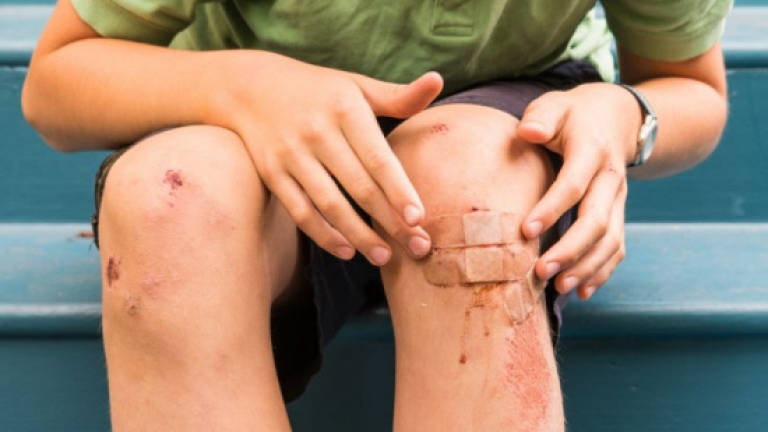Engineered 'glue' allows wounds to heal faster

IT may sound like something out of "Asimov's Science Fiction" magazine, but researchers in Switzerland have created a substance designed to help wounds heal faster, from minor cuts to broken bones, reports LiveScience.
The substance, referred to as "engineered growth factor," works by "remaining near the damaged tissue longer than it normally would."
Growth factors are defined as proteins produced naturally by animals. These factors have a variety of uses in the body, from contributing to fetal development to healing skin gashes and broken bones. When the body is injured, growth factors signal certain cells to surround the wound and promote healing.
While growth factors are essential in the healing of wounds, it is difficult to get such proteins to "stick where they are needed." Long-lasting, engineered "glue" could subsequently benefit those with chronic wounds stemming from diabetes or immune system deficiencies.
Studies were conducted on mutant mice with genetic defects making it difficult for wounds to heal. The substance was applied to new wounds on the mice, signaling cells to help heal the damage, and quickly. Its ability to stay put means it could be applied to injuries in much smaller doses, with scientists able to use amounts "up to 250 times smaller" than any such substance used previously.
Jeffrey Hubbell, a professor of bioengineering at the Swiss Federal Institute of Technology in Lausanne (EPFL) and study co-author, noted that smaller doses are key to the effectiveness of the product, as previous experiments often resulted in growth factors going into "overdrive."
"You get bone formation where you don't want it," Hubbell said. "Growth factors used in wound healing can stimulate blood-vessel growth, but if the doses are too large, they cause the vessels to become too permeable, resulting in bruises." The professor also noted the work is still in very early stages, and the next step is to use the substance on larger animals, particularly in terms of bone treatments.
Piyush Koria, a professor of chemical and biomedical engineering at the University of South Florida, remarked that studies like these could get a higher number of growth-factor treatments into clinics. As of now, only two growth factors are used in clinical treatments, although studies have gone on for years.
"[Clinical researchers] all mention that delivery has been a big issue," Koria said. "Such treatments could also help treat burn victims. One reason even small third-degree burns are so hard to treat is that the cells that would release growth factors are simply not there anymore."
Koria admits he is still cautious about the work, as designing treatments using growth factors is "tricky." However, if the treatment is successful, doctors will have another option for patients regarding wound healing and reconstruction.
The new research was published in the February 21 issue of Science. – AFP Relaxnews